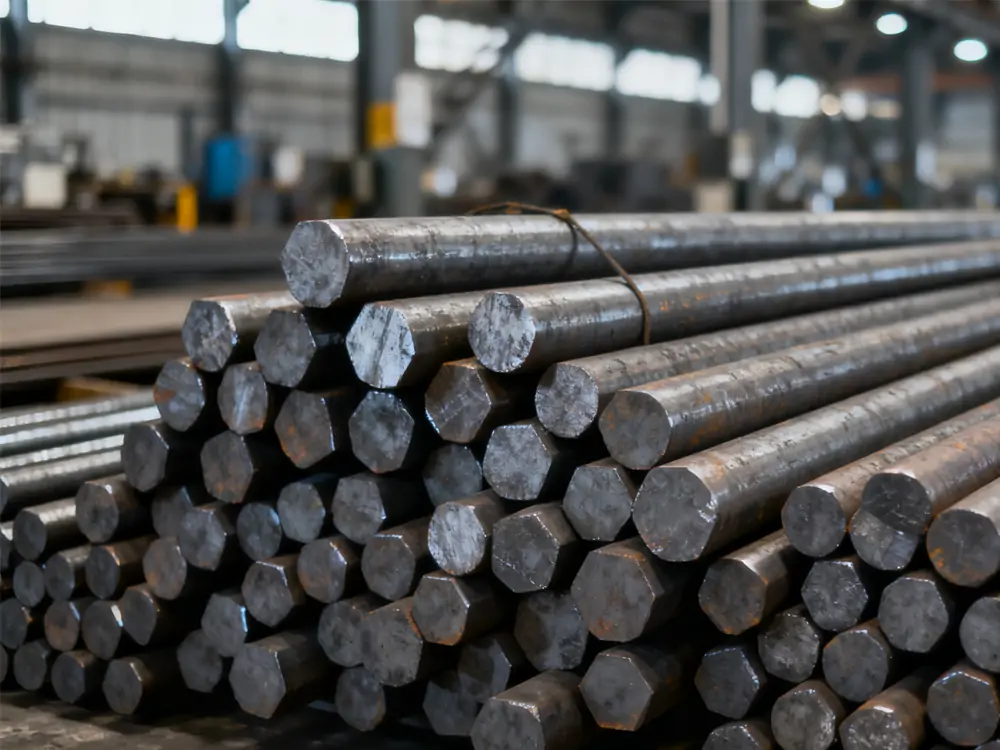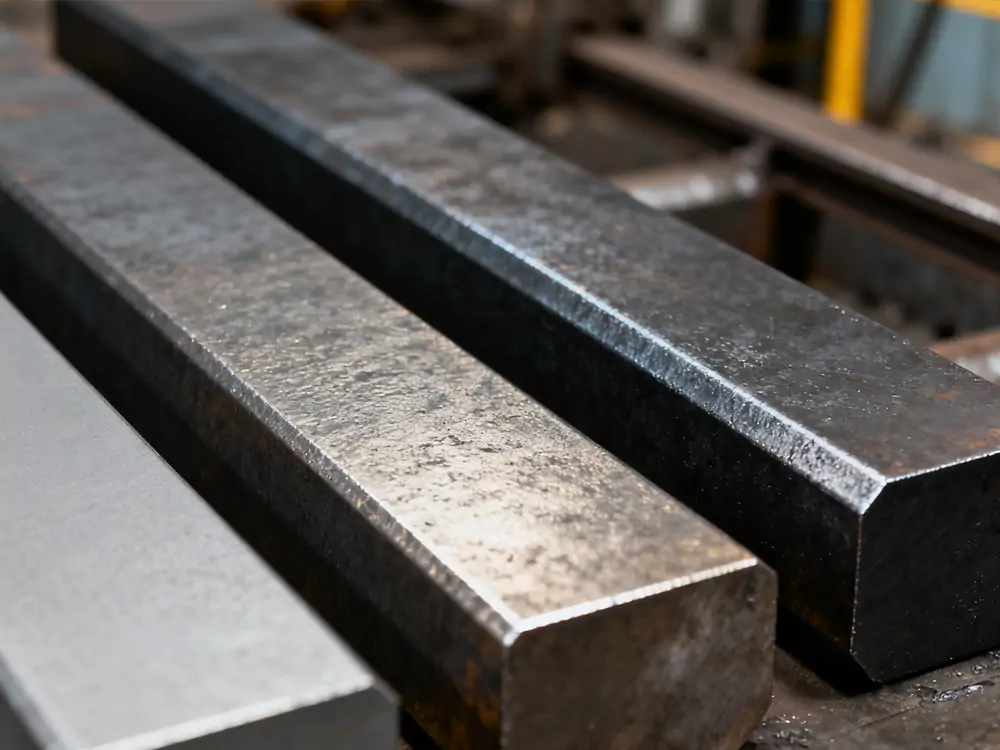Giriş
Karbon çeliği endüstrilerde oldukça fazla kullanılmaktadır. Bunlardan birkaçı, karbon çeliğinin operasyonlarında kullanıldığı araba imalat endüstrileri, makine ve alet imalatının yanı sıra inşaat endüstrisidir.
Bu çeliğin en büyük bileşeninin karbon, daha küçük parçalarının ise manganez, silikon ve diğer alaşım metalleri olduğunu unutmamak önemlidir.
Bu makaleyi okuyarak, karbon çeliği yoğunluğu hakkında hangi tür özellikleri ve en basit bilgileri öğrenebilirsiniz. Yardım almadan, malzemenin mukavemetini, sünekliğini, işlenebilirliğini ve termal performansını doğrudan ölçebilirsiniz.
Karbon Çeliğinin Yoğunluğu Nedir?

Kazan boru ve tüp üreticileri yoğunluk kavramına aşina olmalıdır. Yoğunluk, belirli bir malzemenin her boşlukta ayarlanması ve moleküllerin birbirine ne kadar yakın paketlendiğidir. Çeliğin yoğunluğu kabaca fit küp başına 490 pound veya 7,85 g/cm³ veya 7850 kg/m³'tür.
Karbon çeliği tipik olarak şu yoğunluğa sahiptir 7,75 g/cm³ ila 8,05 g/cm³, yoğunluğuna karşılık gelen 7.750 kg/m³ ila 8.050 kg/m³. Bu biraz 0,282 ila 0,291 lb / in³ emperyal birimlerde. Ortalama yoğunluk 7,85 g/cm³ (7.850 kg/m³, 0,284 lb/in³) en çok alıntı yapılanıdır. Bu, ASTM A36, Grade B, A106 ve A53 dahil olmak üzere en popüler kalitelerin bir ortalamasıdır.
Yoğunluğun karbon çeliğinin özellikleri üzerinde ne gibi etkileri vardır?
Çeliğin yoğunluğunu etkileyen karbon içeriği, varyasyonun ana kaynağıdır. İşte ayrıntılar:
Güç-Ağırlık Oranı
Bir üretici, karbon çeliğindeki daha yüksek karbon içeriğinin onu daha yoğun hale getirme eğiliminde olacağını bilmelidir. Bazı insanlar yüksek karbonlu çelik kullanarak köprüler, basınçlı kaplar ve büyük makineler yaparlar.
Sertlik ve Süneklik
Mukavemeti ve esnekliği karbon çeliğini sert ve sünek malzemeler yapmak için uygun hale getirir. Üretici, esnekliğin karbon çeliğindeki karbon içeriğiyle ters orantılı olduğunu, mukavemetin ise doğrudan bununla ilişkili olduğunu bilmelidir.
Termal Özellikler
Daha yoğun karbon çeliklerinde daha yüksek ısı kapasitesi ve termal genleşme katsayıları görülür. Kritik sıcaklığa ulaşmadan önce daha fazla ısı tutarlar.
Elektriksel İletkenlik
Yoğunluktaki bir artış, direnç arttıkça elektrik iletkenliğinde bir azalma anlamına gelir.
Korozyon Direnci
Korozyon mutlaka yoğunluğa bağlı değildir, ancak çeliğin atomik kalabalıklığı ne kadar yüksekse, malzemenin çevresel etkilere karşı direnci o kadar iyi olur.
Karbon Çeliğinin Bileşimi ve Türleri

Üretici, malzemenin karbon içeriğinin çeliğin yoğunluğunu ve performans özelliklerini önemli ölçüde etkilediğini kabul etmelidir.
Düşük karbonlu (yumuşak) çelik
- Karbon içeriği yaklaşık olarak 05%-0.25%.
- Yoğunluk şu şekildedir 85 g/cm³.
- Yaygın notlar şunları içerir AISI 1018, ASTM A36.
- Düşük karbonlu çelik yapısal kirişlerde, borularda, otomobil panellerinde ve bağlantı elemanlarında kullanılabilir.
- İyi sünekliğe, kaynaklanabilirliğe ve işlenebilirliğe sahiptir.
Orta karbonlu çelik
- Karbon içeriği yaklaşık 0.25%-0.60%.
- Yoğunluk şu şekilde korunur 83 g/cm³.
- Yaygın notlar şunları içerir AISI 1045 ve AISI 1055.
- Aks, dişli, makine parçaları ve şaft yapımında kullanılabilir.
- Mukavemet ve süneklik dengelenmiştir.
Yüksek karbonlu çelik
- Yoğunluk şu seviyeye düşürülür 81 g/cm³.
- 0,60 ile 1,00% arasında karbon mevcuttur.
- Yaygın notlar şunları içerir AISI 1075 ve AISI 1095.
- Kesici aletlerde, bıçaklarda ve aşınmaya dayanıklı parçalarda kullanılabilir.
- Kırılgan, sert ve güçlüdür. Tokluğunu artırmak için belirli bir şekilde ısıl işlem görmesi gerekir.
ile yoğunlukta hafif bir azalma vardır. artan karbon içeriği, yaklaşık olarak 0,1% artış başına 0,02 g/cm³. Bunun nedeni, artışın karbon içeriğindeki atomik aralığı azaltmasıdır.
Sonuç
Karbon çeliğinin yoğunluğu, mukavemetini, sünekliğini ve farklı sektörlerdeki performansını doğrudan etkiler. Karbon içeriğindeki değişiklikler, farklı özelliklere ve yoğunluklara sahip ürünlerle sonuçlanır ve bunları çeşitli endüstrilerde kullanılabilir hale getirir.
Bir üretici olarak, mühendislerin ve üreticilerin uygulamaya göre karar vermelerini sağlamak için değişen karbon içeriğine sahip karbon çeliğinin özelliklerine aşina olunmalıdır.
